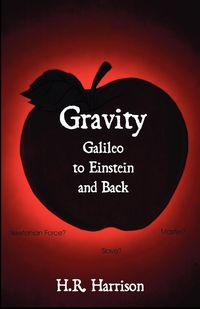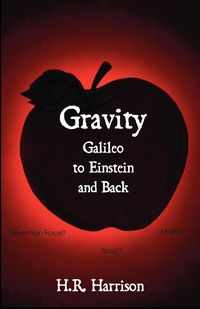Gravity - Galileo to Einstein and Back - Harrison H. R.
Gravity - Galileo to Einstein and Back - Harrison H. R.
- Newtonian Force, Slave or Master?
EAN: 9781581129328
Symbol
417EXK03527KS
Autorzy
Harrison H. R.
Rok wydania
2006
Elementy
158
Format
14.0x21.6cm
Język
angielski

Bez ryzyka
14 dni na łatwy zwrot

Szeroki asortyment
ponad milion pozycji

Niskie ceny i rabaty
nawet do 50% każdego dnia
Niepotwierdzona zakupem
Ocena: /5
Symbol
417EXK03527KS
Kod producenta
9781581129328
Autorzy
Harrison H. R.
Rok wydania
2006
Elementy
158
Format
14.0x21.6cm
Język
angielski

Gravity - Galileo to Einstein and Back starts with a revision of the fundamentals of the theory of dynamics and gravitation. The primary object is to present a relativistic theory of gravitation, which is an extension of the Special Theory of Relativity. The new approach to gravitomagnetics reproduces results which are identical, for the precession of the perihelion of Mercury and for the deflection of light grazing the Sun, to those given by the general theory of relativity. Both of these were hailed as justifications of the general theory. When the new theory is applied to the precession of a gyroscope in space, there is a small difference from the value quoted to that given for the NASA/Stanford Gravity Probe B experiment, which has just been completed. The results are due in Spring 2007.
In order to explain the new approach, it is necessary to re-examine Newtonian dynamics and special relativity. Certain aspects are better seen if force is treated as a defined quantity rather than a primary one. This idea is not new; it was the view of d'Alembert and especially H. R. Hertz. One result is that the principle of equivalence, in its weak form, does not arise, yet this is stated to be one of the foundations of general relativity. Curved space time may be regarded as just another invention to replace the invention of force. Neither are needed but are very useful concepts, as is money to commerce.
Newtonian gravity gives rise to a relative acceleration which is related to the relative position between two bodies, in the new gravitomagnetic theory relative acceleration depends also on relative velocity. This removes the need for an inertial frame of reference however the frames must be non-rotating. This is defined by postulating that light, in the absence of matter, travels in straight lines as well as at a constant speed. What follows is reasonably simple mathematics; certainly simpler than that of curved space time.
EAN: 9781581129328
EAN: 9781581129328
Niepotwierdzona zakupem
Ocena: /5
Zapytaj o produkt
Niepotwierdzona zakupem
Ocena: /5
Napisz swoją opinię

